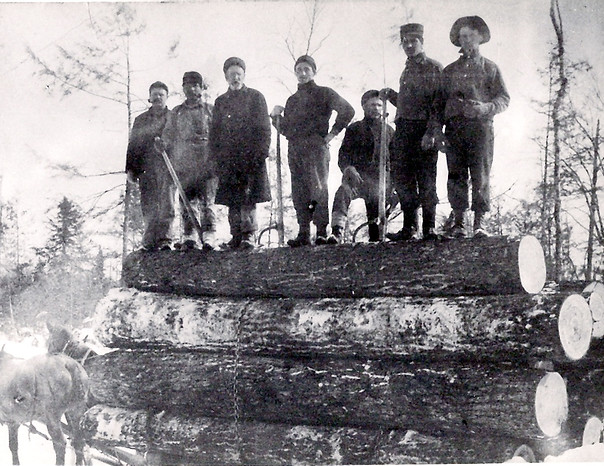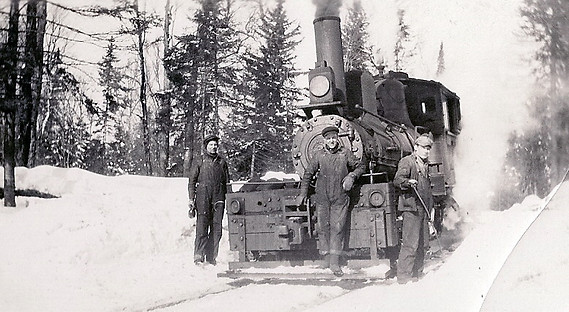
The Chain
The Turtle Lake Chain is a three-lake chain located in the town of Winchester (a 53-square-mile area just north of Manitowish Waters) in Vilas County, Wisconsin. The chain is fed by two creeks that flow in from other area lakes, and connected by short channels. Water level is regulated by a small dam on South Turtle Lake, the origin point for the Turtle River (which becomes the Flambeau Flowage.) In total, the chain covers nearly 1,000 acres and is home to a variety of wildlife in and around its waters, from loons, eagles, ducks and hummingbirds to fox, otter, coyote and whitetail deer. The chain is known for its many recreational pursuits, from canoeing and kayaking to water-skiing and tubing to fishing (with an impressive population of both musky and pike, as well as bass, walleye and panfish).

Rock Lake is the northernmost lake in the chain. It covers 120 acres and has a maximum depth of 18 feet. The lake is fed by No Man's Creek, and connects to the chain via a winding, 100-yard waterway (home to the public boat landing that provides access). The lake's isolated feel makes it a favorite for kayaking and observing wildlife.
North Turtle Lake
The heart of the chain is North Turtle Lake, covering 359 acres with a maximum depth of 58 feet. North Turtle is fed by water from Rainbow Creek and Rock Lake (connecting to Rock Lake via a 100-yard waterway, where a public boat landing provides access). North Turtle boaters access South Turtle Lake via a passage beneath a small bridge.
South Turtle Lake
At 466 acres, South Turtle Lake is the largest lake in the chain, and has a maximum depth of 40 feet. Visitors have access via a public boat landing on the northeastern shore of the lake. It connects to North Turtle via a water passage below a small bridge. A dam on South Turtle Lake regulates the water depth for the chain, and marks the headwaters of the Turtle River. The town of Winchester is located near the lake's northwest shore.
Rock Lake

History
THE FIRST BUILDING RAISED IN WINCHESTER.

History
BEGINNINGS
The earliest inhabitants of Vilas County were members of the Chippewa band of Native Americans; the first recorded white settler was a man named Ashman who established a trading post in Lac du Flambeau in 1818. In the 1850s migrants from New England — primarily Vermont and Connecticut — constructed wagon roads and trails through Vilas County, including the Ontonogan Mail Trail and a military road from Fort Howard to Fort Wilkins in Copper Harbor, Michigan.
Vilas County was set off from Oneida County on April 12, 1893 and named for William Freeman Vilas. Originally from Vermont, Vilas represented Wisconsin in the United States Senate from 1891 to 1897.
THE LOGGING ERA
In the 1850s, logging began in the northwoods, leading to the establishment of many northwoods
towns and communities. Around the turn of the century, lumber barons from northern Michigan organized into the Turtle Lake Lumber Company, built a sawmill and established lumber operations centered on South Turtle Lake (though their wood-harvesting extended far to the west and east of the immediate vicinity).

WINCHESTER-BASED LUMBERJACKS POSE WITH THEIR HAUL.
In 1902, the lumber company established both the town of Winchester (an area of Vilas county covering 53.6 square miles — including the lakes in our chain) and within it, near the northwest shore of South Turtle Lake, the community of Winchester. Both were named for Walter Winchester, a prominent figure at the mill who was known for having "the shiniest black shoes."
Logging operations boomed, with the mill cutting 15,000,000 feet of lumber per year. 140 men were employed in the community, with another 200 felling and transporting trees in the forests. To house their workers, the company built 53 near-identical houses, with each boasting a white picket fence, a boardwalk, vegetable and flower gardens.

LOOKING DOWN A ROW OF LUMBER COMPANY HOUSES IN WINCHESTER, CIRCA 1910.
The houses were powered by electricity from the mill, with a strict lights-out policy at 10 pm (when residents switched to kerosene lanterns.) The settlement grew to include a town hall, a community center (featuring movies and dances twice weekly), a two-room schoolhouse, a doctor's office with a small hospital, a general store and a post office. A brass band held concerts in the bandstand; the company baseball team competed against teams from other lumber towns.

WORKERS GATHER IN WINCHESTER'S SAWMILL.

A TRAIN CROSSES ONE OF THE TWO RAILROAD BRIDGES ON SOUTH TURTLE LAKE.
THE RAILROAD
To facilitate lumber operations, the Chicago and Northwestern Railroad established a line that ran from Mercer to Winchester to Presque Isle. The Winchester Depot was located on the northwestern shore of the Turtle River where it joined South Turtle Lake; tips of pilings are still visible here and at one other location in South Turtle Lake where railroad bridges once crossed the water. (Today, the center-most pilings have been removed and buoys placed to mark safe passage for boaters.)
THE RESORT ERA
While the Turtle Lake Lumber Company recognized the potential of the Vilas County forests in 1902, a man named George Buck had already recognized the natural beauty of the area and established the first resort almost a decade earlier. In 1893, Buck and his sons took in the beautiful view from the narrow strip of land between North and South Turtle Lakes, and established Buck's Divide Resort. It featured a main lodge, 15 cabins, and numerous fishing camps around the chain. "The Divide" withstood the tests of time and change, co-existing with and eventually outlasting the lumber company, as well as numerous resorts that came after. Today, a more modest version of the Divide continues to rent cabins to vacationers.
At its peak, three locomotives serviced the lumber company, but with the last log milled in 1926, railroad operations also faded away. Between 1941 and 1945, the rails were removed — very likely to be utilized in scrap metal drives to aid production efforts in World War II. Today, only the submerged pilings remain.

ONE OF THE LUMBER COMPANY'S THREE LOCOMOTIVES .
When the area had been completely logged, the Turtle Lake Lumber Company sold much of the settlement and surrounding area to the Chicago-based Stauben Outdoor Club. The club used many of the existing houses and buildings to create a resort complex and operated for several years. Then they moved on, selling the homes and lots to individual buyers. Some houses were moved; others were dismantled for lumber. Businesses relocated towards County Highway W.

A LAKESIDE CABIN AT MEINEL'S RESORT.
With the lumber company gone, area residents who remained looked for a new way to make a living. Recognizing that much of the natural beauty of the area was still intact, realizing that clear-cut fields would soon be repopulated with birch, balsom and pine, and noting both the staying power of Buck's Divide and the increasing popularity of the northwoods as a vacation destination for Chicago and Milwaukee-area residents, many decided to get into the tourism business. In the middle part of the century, a number of resorts joined Buck's Divide along the shores of the Turtle Lakes Chain, including Meinel's, Sell's Resort, Pleasant Point, Timberlane and Black Forest. The amenities they provided varied from resort to resort, though the scenic beauty and excellent fishing were consistent staples.
TRANSITION TO MODERN TIMES
As resorts transitioned to new generations and new managers, and vacationers' tastes evolved from vacation stays to vacation homes, many resort owners decided to divide and sell their land and their buildings. Eventually practically all the resorts on the chain disappeared — though some of the original cabins still remain, carefully maintained by private owners who appreciate the rich history they represent.
The community also evolved. To enhance public safety and well-being, the first fire engine was purchased in 1980, and ambulance and fire departments were updated and upgraded. In 1988, a new fire department / emergency services building / town hall was established. To help preserve history and provide a community gathering place for activities, the Winchester Public Library was established in 1985, located in the original 1910 schoolhouse. To protect the lakes and help maintain both the quality of the water and the quality of life in the community, various lakes associations (including our own TLCA) were established in the 1990s.
Together, all of these events tell a story of an enthusiastic, engaged and resilient community of people who look forward to charting a course into the future, while being informed and guided by the many contributions of who came before.


